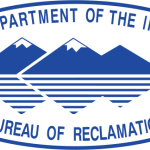- Industri: Government
- Number of terms: 15655
- Number of blossaries: 0
- Company Profile:
A U.S. Department of the Interior agency that oversees water resource management incuding the oversight and operation of numerous diversion, delivery, and storage projects the agency has built throughout the western United States for irrigation, water supply, and attendant hydroelectric power ...
A hypothetical fluid having a unit weight such that it will produce a pressure against a lateral support presumed to be equivalent to that produced by the actual soil. This simplified approach is valid only when deformation conditions are such that the pressure increases linearly with depth and the wall friction is neglected.
Industry:Engineering
The upward movement of land surfaces or structures due to subsurface expansion of soil or rock, or vertical faulting of rock. Upward movement of soil caused by expansion or displacement resulting from phenomena such as moisture absorption, removal of overburden, driving of piles, frost action, and loading of an adjacent area.
Industry:Engineering
Method of estimating the value of activities, services, or other goods, where value is defined as the maximum amount a consumer would be willing to pay for the opportunity rather than do without. The total willingness to pay, minus the user's costs of participating in the opportunity, defines the consumer surplus and benefits.
Industry:Engineering
A downstream hazard classification for dams in which more than 6 lives would be in jeopardy and excessive economic loss (urban area including extensive community, industry, agriculture, or outstanding natural resources) would occur as a direct result of dam failure. This classification also applies to structures other than dams.
Industry:Engineering
A map indicating surface elevation and slope. U.S. Geological Survey quadrangle series maps showing the shape of the earth's surface by contours. They also show control data, boundaries, roads, buildings, watercourses, lakes and reservoirs, and other land features. The 7.5-minute series is appropriate for doing inundation mapping.
Industry:Engineering
A separation between adjoining parts of a concrete structure which is provided to allow small relative movements, such as those caused by temperature changes, to occur independently. A flexible filler is provided in the joint, reinforcement does not pass through the joint. A joint that permits pipe to move as a result of expansion.
Industry:Engineering
Any device used to monitor the performance of the structure during its construction and throughout its useful life. An arrangement of devices installed into or near dams (i.e., piezometers, inclinometer, strain gages, measurement points, etc.) and used to evaluate the structural behavior and performance parameters of the structure.
Industry:Engineering
An agent for generation projects who markets power on behalf of the generator. The marketer may also arrange transmission, firming or other ancillary services as needed. Though a marketer may perform many of the same functions as a broker, the difference is that a marketer represents the generator while a broker acts as a middleman.
Industry:Engineering
The transmission of electricity by an entity that does not own or directly use the power it is transmitting. Wholesale wheeling is used to indicate bulk transactions in the wholesale market, whereas retail wheeling allows power producers direct access to retail customers. This term is often used colloquially as meaning transmission.
Industry:Engineering
The highest elevation at which water is normally stored, or that elevation which the reservoir should be operated for conservation purposes. Usually the elevation at the top of the active conservation capacity. The maximum elevation to which the reservoir may rise under normal operating conditions exclusive of flood control capacity.
Industry:Engineering
